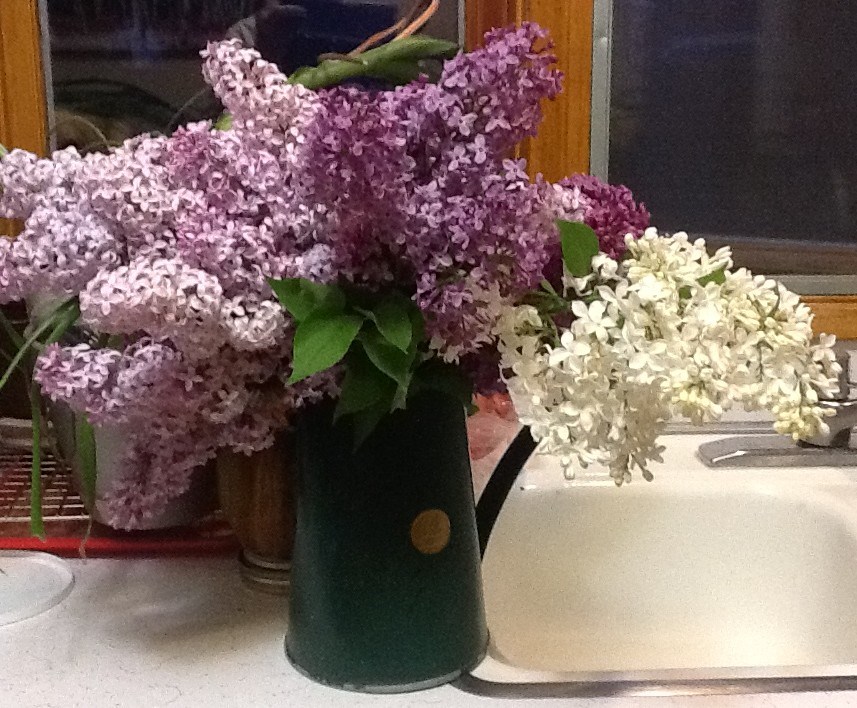I think I had memorized Walt Whitman’s poem long before I ever saw a lilac (Syringa spp.) in bloom. I had an early teenage crush on the poet, but growing up in Maryland, it was simply too warm a climate for lilacs. They need a cold period. Oh, Saskatchewan! Cold periods and lilacs a-plenty!
As I write this, lilacs are in bloom all over my rural yard in a myriad of colours with many of them reaching more than 15 feet in height. I love them for their colour, their fragrance and their sheer exuberance and bring big blousy bouquets inside.
Most lilac species are native to northern China and do well on the Canadian prairies. Plant breeders have improved them for over 150 years and have developed many varieties with attractive blooms and more compact plant forms. Their small, tubular flowers, in densely packed panicles, are spectacular due to the sheer size of these panicles, the subtle variety of colours, and the intense scent of many.
Lilacs still growing around long-abandoned homesteads are a testament to their adaptability and longevity. Once established, they are drought-tolerant and need little attention. Plant them in full sun and well-drained soil. After bloom, prune off the developing seed heads and, if desired, reduce their height. This is also a good time to remove unwanted suckers. Their ability to sucker varies. Some varieties are restrained (ideal for smaller urban landscapes) while others are far more energetic and more suitable for farms and acreages.
Here are some favourites:
The Meyer or dwarf Korean lilac (Syringa meyeri ‘Palibin’), originally collected in Beijing, China by Frank Meyer in 1909 (where it is known only in gardens), is 5-7 feet high and about the same width, maintaining a dense form with little pruning. It is miniature in size, foliage and flowers, making it ideal for smaller spaces. Deep purple buds develop into pinkish-lavender flowers.
The late lilac (Syringa villosa) is native to northern China. A large, round-topped shrub composed of many upright branches, it is non-suckering. The flowers are produced in narrow triangular panicles and vary from pinkish to near white. In the 1920s, Isabella Preston of the Central Experimental Farm, Ottawa, developed Syringa x prestoniae hybrids of S. villosa and S. reflexa. Among these are ‘Donald Wyman’ (10 x 6 feet) with purplish buds that open to reddish-purple flowers and ‘Miss Canada’ (8 x 6 feet) with deep reddish buds that open to bright pink.
The Common lilac (Syringa vulgaris) has given rise to a large group of lilacs known as the French hybrids. The first of these was introduced by Victor Lemoine of France in 1878. Colours range from white to pink, to blue and dark purple. With a height and spread of 6 to 12 feet, they expand over time through suckering. Among these hybrids are ‘Beauty of Moscow’, a heavy bloomer with white flowers tinged with rose; ‘Charles Joly’ which has double, dark purple flowers in large heavy panicles; ‘President Grevy’, over a century old but still one of the finest double blue lilacs; and ‘Sensation’ with beautiful single, deep purple flowers with each petal edged in white.
Hyacinth flowering lilac (Syringa x hyacinthiflora) are early flowering hybrids of the French hybrids and the Korean lilac (S. oblata var. dilitata). They have early bloom, excellent winter hardiness, less suckering and a more compact habit. Many of these were developed by Frank Skinner of Manitoba. These hybrids include ‘Asessippi’ with single, lavender-lilac flowers; ‘Maiden’s Blush’, an outstanding, compact shrub with pink flowers; ‘Mount Baker’ with single white flowers which is a profuse bloomer from an early age; ‘Pocahontas’ with single, dark purple flowers and exceptionally profuse bloom; and ‘Sister Justina’, a compact shrub with outstanding single, white flowers.
This column is provided courtesy of the Saskatchewan Perennial Society (SPS; [email protected]). Check our website () or Facebook page () for a list of upcoming gardening events.




